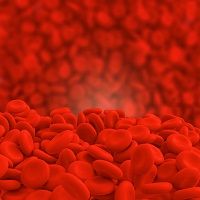Stroke: Early Doses of Novel Anticoagulants Pose No Additional Hemorrhage Risk
After an ischemic stroke, oral anti-coagulants reduce the risk of recurrence, but does giving these drugs early increase the risk of intracranial bleeding? A study found such early dosing does not appear to add to the chances of such a hemorrhage.

After an ischemic stroke, oral anti-coagulants reduce the risk of recurrence.
But does giving these drugs early increase the risk of intracranial bleeding? A study found such early dosing does not appear to add to the chances of such a hemorrhage.
The research is detailed in a paper written by David Seiffge, MD, of the University Hospital, Basel, Switzerland, and colleagues. It appeared in the October issue of Neurology. [Editor’s note: The nomenclature DOAC is preferred by some over NOAC but it refers to the same drugs.]
In patients with recent acute ischemic stroke and atrial fibrillation, investigators assessed whether the starting time of DOACs for secondary prevention had an impact on the rates of patients having an intracranial hemorrhage or a recurrent ischemic event later. . In the primary analysis, investigators compared rates of ICH and recurrent ischemic events (AIS or TIA) between patients with early (≤7 days since event; DOAC early) and those with late (>7 days, DOAC late) start of DOAC.
The researchers found that when DOACs were initiated days later, the risk of intracranial hemorrhage (ICH) among 65% of patients who suffered a stroke was low, peaking at just more than one percent, while the rate of recurrence of acute ischemic stroke (AIS) was high, reaching over seven percent.
The study included consecutive patients with non-valvular atrial fibrillation hospitalized for AIS or TIA (index event) who received secondary prophylaxis with DOAC or vitamin K antagonists (VKAs).
Follow-up occurred at least three months later.
In all, 204 patients were included (median age 79 years, 89% AIS) and total follow-up time was 78.25 patient-years.
Of these, 155 patients received DOACs with a median delay of five days after the index event (interquartile range 3—11) and 49 received VKA.
DOAC therapy was started early in 100 patients (65%).
The team observed one ICH (1.3%/y) and six recurrent AIS (7.7%/y). The ICH occurred in a patient taking VKA. No significant difference in the rate of recurrent AIS between DOAC early (5.1%/y) and DOAC late (9.3%/y, p = 0.53) was observed.
“We analyzed data from our prospective, ongoing registry of patients with AIS or TIA and AF with a recent stroke in which secondary prevention with a DOAC or Vitamin-K antagonist (VKA) has been started, Seiffge wrote.
Even if DOACs are often started early after an index event, the risk of ICH appears to be low, he observed. “Among all patients receiving anticoagulation, the rate of recurrent events was six times higher than the rate of ICH.”
Related Coverage:
Should NOACs Use Be Expanded to Prevent Stroke?